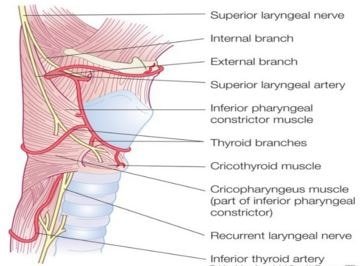Laryngeal Paralysis
What is Laryngeal Paralysis?
Laryngeal paralysis abbreviated as LP, is a common health problem affecting the larynx, or simply known as the paralysis of the voicebox. This has the possibility to develop into an acute respiratory distress or a chronic progressive respiratory distress of a person.

The larynx is the voice box in its medical name. LP is a medical condition that involves an abnormal input reaching the laryngeal muscles or the voice box muscles. These voice box muscles are associated with two important nerves which are the superior laryngeal nerve and the recurrent laryngeal nerve. It is similar with a vocal cord or vocal fold paresis and paralysis states.
The total interruption of nerve impulses with no movement of laryngeal muscles ends up with paralysis; the partial interruption of nerve impulses creating some slow, abnormal motion of laryngeal muscles leads to paresis.
Larynx Anatomy & Functions
The larynx is the main organ that is affected in laryngeal paralysis. It is one of the organs in the body that performs a lot of primary functions which are as follows:

- Breathing and coughing – The larynx performs an airflow management so that during normal breathing, it is at rest as the vocal chords are opened partially. Coughing reflex is initiated to remove and clear the airways of foreign substances present.
- Eating and drinking – Choking is prevented by the larynx as it guides foods eaten and drinks taken into the esophagus and staying away from the trachea. The larynx plays as gateway going to the trachea, which serves as the main airway of the lungs. The trachea and the esophagus are closely located with each other, and both of these structures are situated below the mouth, comprising the throat.
- Talking and singing – As the person tries to talk, shout or whisper, and sing, signals are sent from the brain to laryngeal muscles, allowing the vocal cords to move in their correct positions and to produce vibrations during exhalation.
Signs & Symptoms of Laryngeal Paralysis
Paralysis and paresis of laryngeal muscles or voice box muscles eventually result to voice changes of the person, airway problems during breathing and encounter some difficulties with swallowing.
Voice changes can be having an extra effort while talking as if catching one’s breath, hoarseness of voice, breathy voice like a loud whisper made, pitch and volume may also be affected.
Problems with airway involve breathing that is noisy, shortness of breath with some exertion and coughing is not effective.
Problems with swallowing can be noted when there is choking or coughing manifested each time a person takes in some food or drinks, chokes with saliva and a tendency for food to stick in the throat.
Causes
The nerve impulses directed towards the voice box or larynx is being disrupted in laryngeal paralysis. There is no known exact cause of LP yet despite the presence of advanced technology used by physicians. A list of known causes can include the following:
- Surgeries involving the neck or the chest
- Complication from an endotracheal intubation procedure
- Blunt neck trauma or blunt chest trauma
- Presence of viral infections in the laryngeal nerves
- Existing tumors in the base of the skull, neck and chest regions
Diagnosis
Laryngeal Paralysis is usually confirmed through a general examination done by an otolaryngologist head and neck surgeon with history taking and actual assessment and evaluation of the larynx. Diagnostic tests can be performed through:
- Laryngeal electromyography (LEMG) which measures the strength of laryngeal muscles through electrical currents
- Endoscopy to visualize the status of the larynx and its vocal cords
- Other tests to identify possible causes of LP can be blood tests, X-rays, CT scans and MRI
Treatment
There are two main strategies for laryngeal paralysis with the main goal of improving the vocal function. These are:
- Voice Therapy – The first option that is done that entails physical therapy for paralyzed laryngeal muscles.
- Phonosurgery – An operative procedure that involves repositioning or reshaping of the vocal cords affected so that it can improve the functioning of the voice. This is done depending on the severity of the clinical symptoms, patient’s vocal needs, prognosis of the problem and the causes if available.
References:
WHAT IS VOCAL CORD (FOLD) PARESIS AND PARALYSIS?, HOW IS VOCAL FOLD PARALYSIS/PARESIS DIAGNOSED? At http://www.entnet.org/content/vocal-cord-paralysis
http://www.medicalnewstoday.com/articles/188993.php
Sanuki T, Yumoto E, Nishimoto K, et al (2015 Feb 11). Laryngeal Reinnervation Featuring Refined Nerve-Muscle Pedicle Implantation Evaluated via Electromyography and Use of Coronal Images. Otolaryngol Head Neck Surg.
Miller S (2004 Feb). Voice therapy for vocal fold paralysis. Otolaryngol Clin North Am. 37(1):105-19.
Munin MC, Rosen CA, Zullo T (2003 Aug). Utility of laryngeal electromyography in predicting recovery after vocal fold paralysis. Arch Phys Med Rehabil. 84(8):1150-3.
